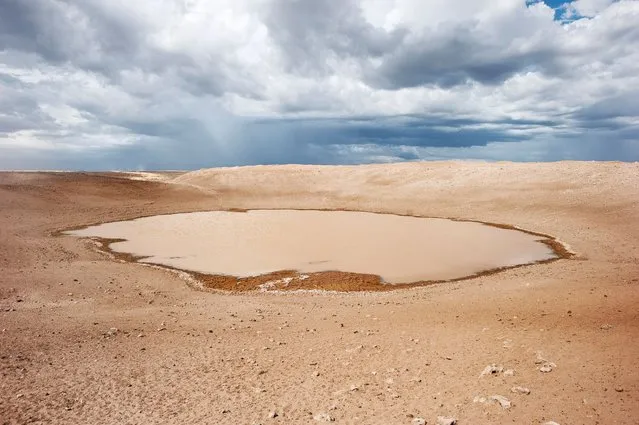
“Environmental Migrants: The Last Illusion” by photographer Alessandro Grassani, documents the life of people in Kenya, Mongolia and Bangladesh who migrate to escape environmental stresses to the city of their own countries in hopes for a better life. Looking for new ways of livelihood, these “Environmental Migrants” leave for urban areas which are often overcrowded and extremely poor. In this photo, a drained well in the Turkana County of Kenya which once was the only spring of drinking water for the territory. This territory is almost totally deserted due a severe draught. (Photo by Alessandro Grassani)

According to Grassani, droughts and wars between different pastoral groups seeking pasture and water for their animals are pushing many Kenyans dreaming of a better future towards Nairobi. The picture shows Edipo, 23, from the Turkana tribe in Kenya. Edipo was badly injured in an attack by a neighboring tribal group. (Photo by Alessandro Grassani)
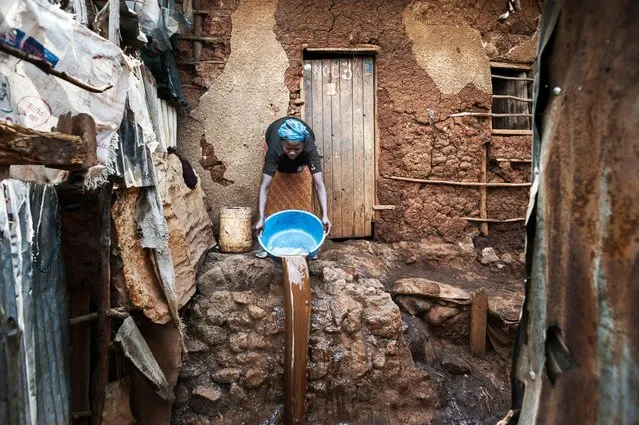
“The Last Illusion” in the title refers to, according to Grassani, the illusion of a favorable future for these migrants, who once in the city continue to suffer due to lack of resources, education and opportunities. Pictured in this photo, Rose, 34, works outside her mud hut in Nairobi, Kenya. Rose is from the Amagoru village in the Turkana province, an area that has suffered from an immense drought. She decided to immigrate to Nairobi with her husband and their six children after all her animals died of hunger and thirst. (Photo by Alessandro Grassani)
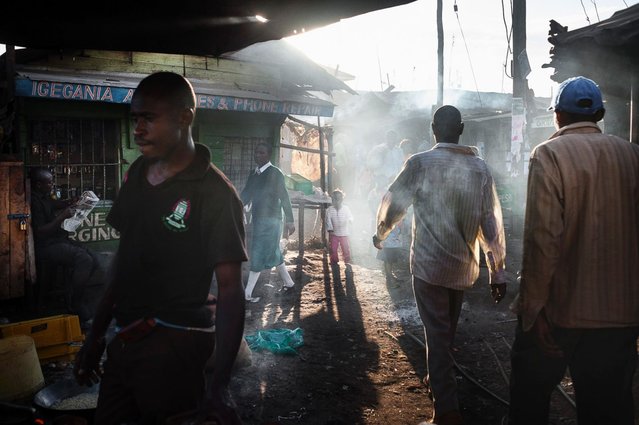
The cramped streets of the slum of Kibera where many environmental migrants fleeing from the countryside go to live in Narobi, Kenya. (Photo by Alessandro Grassani)
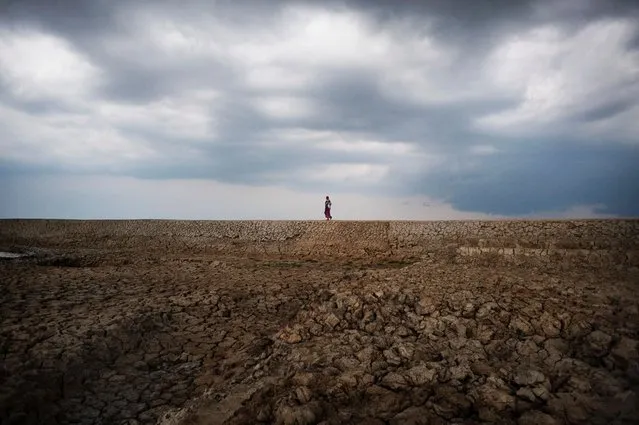
Grassani visited the communities living in the districts of Dacope, Satkhira and Begherhat, Bangladesh where residents face floods and destruction from cyclones. The Dacope district in Bangladesh, seen here, was hit by a cyclone in May, 2009 causing the whole area, which was once farmland, to be completely dried up due to the infiltration of sea water. (Photo by Alessandro Grassani)
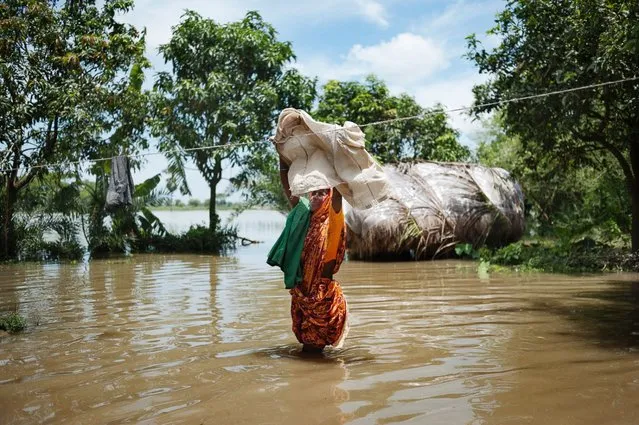
Fazila Khatum hangs laundry out to dry as water from a nearby river floods the streets of the Satkhira district of Bangladesh. For the past nine years, the river has caused severe flooding forcing nearby residents to live in fear never knowing how quickly or how much water will come. Fazila and her husband used to cultivate rice which has become impossible due to the flooding; they now sell poultry to the markets. (Photo by Alessandro Grassani)
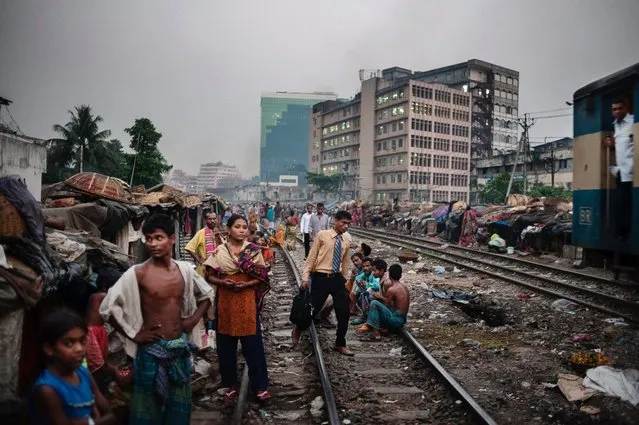
The view of Kawran Bazar slums where thousands of people live alongside the railway lines in Dhaka, Bangladesh. Over the years, Dhaka has seen an influx of newcomers entering the city, some of which are migrants leaving the countryside due to severe flooding and destruction caused by cyclones. (Photo by Alessandro Grassani)
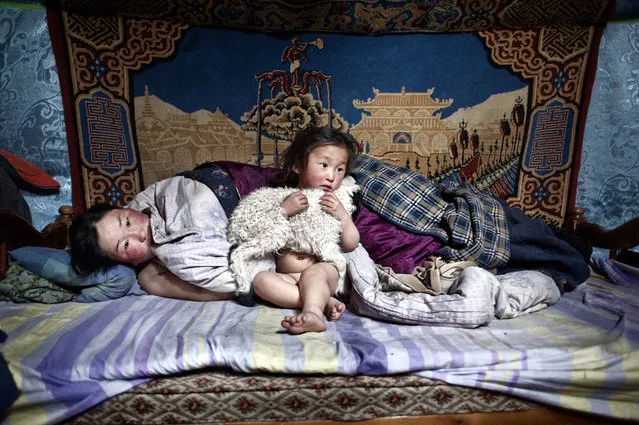
Asia, Mongolia, March 19, 2011. In the photo Erdene Tuya together with her 3 years old son called Tuvchinj (he hugs a young sheep which sleeps with them) just woke up while her husband Batgargal went out to have a look at the herd with the other son called Azjargal, 6 years old. In Mongolia's Arkhangai province, the Tsamba family lives on the edge, struggling through harsh winters alongside their herd of sheep. Severe winter conditions, known as dzud, have been responsible for the deaths of half the family's once 2,000-strong herd over the past three winters. Recently, in search of warmer pastures, the Tsambas moved from Bulgan province in the north to this region near a central Mongolian village called Ulziit. Only in 2010, during one of the harsher Dzuds, more than 8 million sheep, cows, horses and camels died in Mongolia so 39,000 herdsmen had no choice but to migrate towards Ulan Bator. (Photo by Alessandro Grassani)
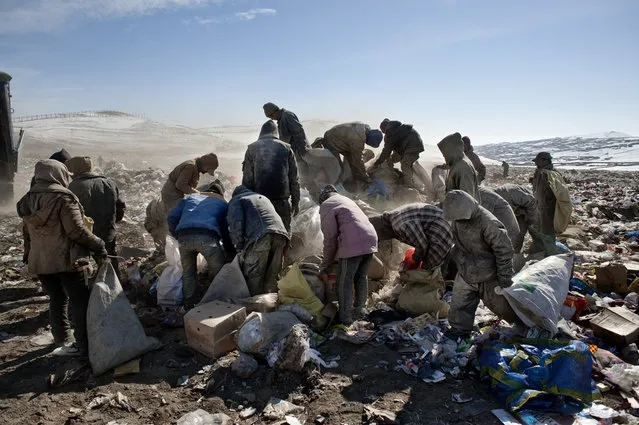
Asia, Mongolia, Ulaan Baator, March 7, 2011. At the garbage dump in Ulaan Baator, many environmental migrants find their first job in the city: collecting scrap bits and selling them for money. (Photo by Alessandro Grassani)
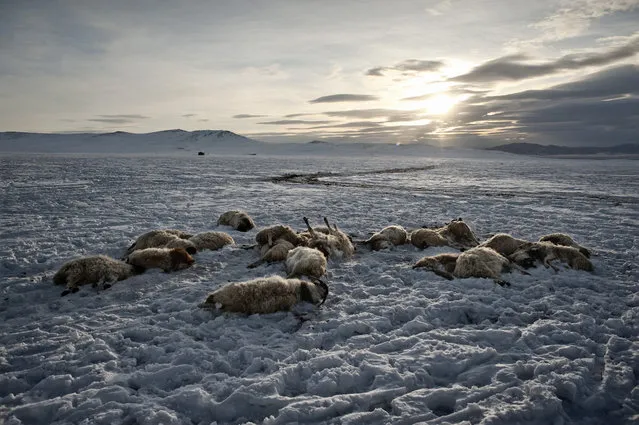
Asia, Mongolia, March 16, 2011. In the Arkhangai province, where Tsamba family is actually living and trying to survive whit their herd. Tsamba family has lost nearly 20 sheep (in the photo) over two cold winter days. (Photo by Alessandro Grassani)
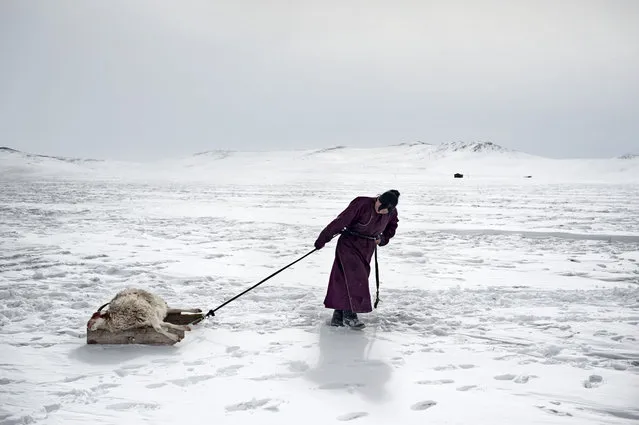
Asia, Mongolia, March 18, 2011. In the photo, 29-year-old Erdene Tuya hauls a sheep lost for the dzud to a small burial ground close to their yurt (gher). In Mongolia's Arkhangai province, the Tsamba family lives on the edge, struggling through harsh winters alongside their herd of sheep. (Photo by Alessandro Grassani)
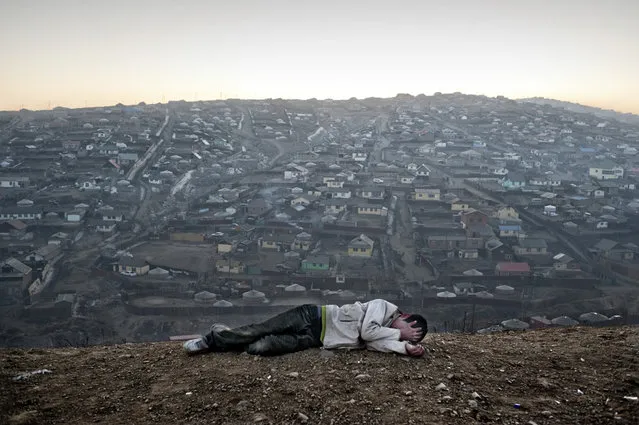
Asia, Mongolia, March 27, 2011. A view of Ulaan Baator over the shoulder of a slumbering drunk. Alcoholism is a huge problem in the city, home to almost half of Mongolia's people. The capital's population has doubled in the past two years, expanding outward in a haphazard sprawl, and many inhabitants live in slums known as the “Gher District”. High levels of unemployment and poverty await herders who abandon rural areas and arrive in the city, illiterate and untrained in any skills necessary for urban jobs. Only in 2010, during one of the harsher Dzuds, more than 8 million sheep, cows, horses and camels died in Mongolia so 39,000 herdsmen had no choice but to migrate towards Ulan Bator. (Photo by Alessandro Grassani)

Asia, Mongolia, Ulaan Baator, March 10, 2011. Jigjjav family taken in the space of few meters square under the staircase where they live. In the small room the former shepherd Argalshikhan Jigjjav and his pregnant daugther Dyun Erdene, 26 years old and his nephew Aztardal 4 years old is playinfg on the stair. They used to live with in Gobi-Ugtaal in the Dunggobi province, but during the Dzud they lost their 150 animals and, therefore, they decided to move to the city. Argalshikhan Jigjjav has been a shepherd for all his life; he is almost illiterate and he is not able to find any king of job in Ulaan Baator. (Photo by Alessandro Grassani)
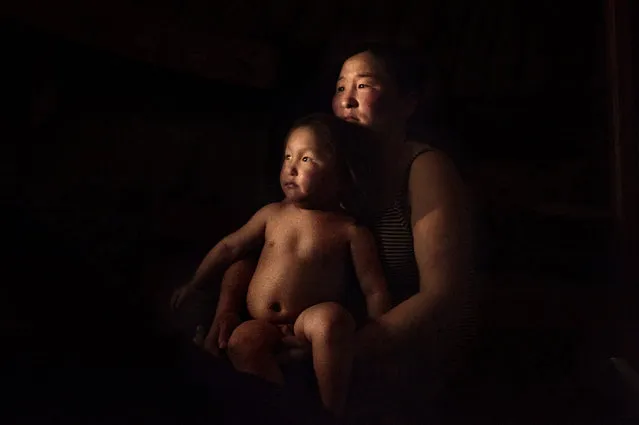
Asia, Mongolia, March 18, 2011. Erdene Tuya, 29 years old together with is son Tuvchinj, 3 years old, during the night just before to go sleep. (Photo by Alessandro Grassani)
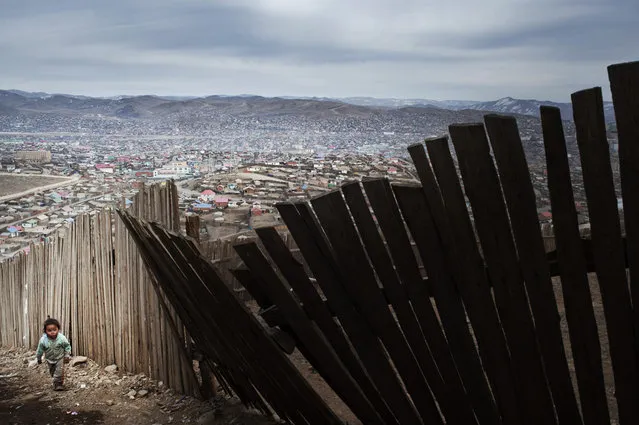
Asia, Mongolia, March 29, 2011 Ulaan Baator, a child walking on the streets of the Gher District. In Ulaan Baator a huge number of children is not able to attend the school because of the extremely poor conditions of their families. In Mongolia half of the population live on top of each other in the capital, which has over one million, two hundred thousand citizens. (Photo by Alessandro Grassani)
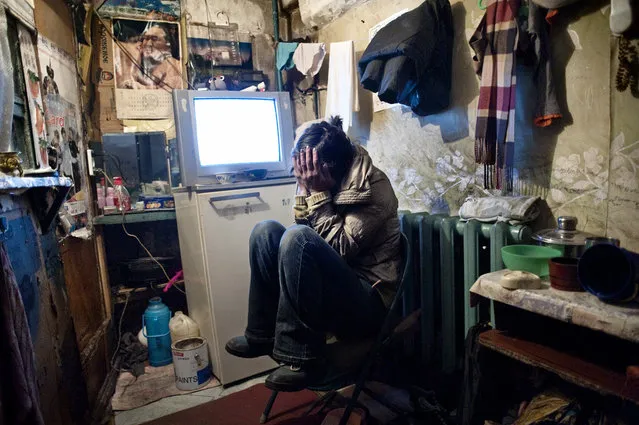
Asia, Mongolia, Ulaan Baator, March 22, 2011. Dyun Erdene, 26-year-old, former shepherd, sits in the tight space she shares with her family – her 55 years old father, a former shepherd, her mother, one sister and her 4-year-old nephew – in Ulaan Baator. She used to live with her family in Gobi-Ugtaal in the Dunggobi province, but during the Dzud they lost their 150 animals and, therefore, they decided to move to the city. She is pregnant but her boyfriend left her and now she is alone. Her mother is an apartment guard and they are living in an overcrowded room under the staircase in the same building where her mother works. They got this space thanks to her mother work (the only one who is working in the family). They should pay a small rent and they can just save some money for basic food. Her father has been a shepherd for all his life; he is almost illiterate and he is not able to do any other job. (Photo by Alessandro Grassani)
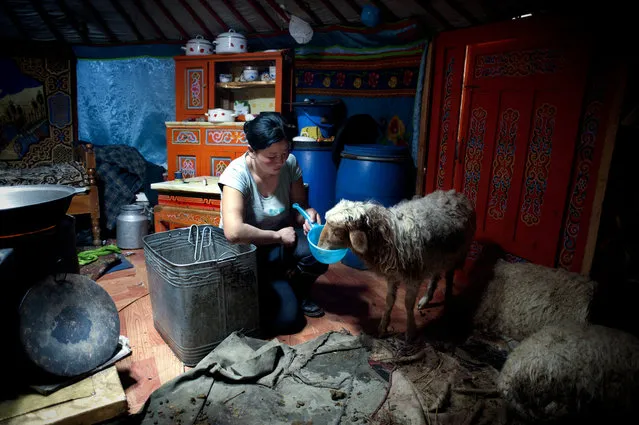
Asia, Mongolia, March 19, 2011 In the Arkhangai province, around 20 miles far away from Ulziit village where Tsamba family is actually living and trying to survive whit their herd. They moved here from Bulgan province few months ago just before the 2011 winter looking for a warmer place for their sheeps. Durind 2009, 2010 and 2011 the Dzud winter killed 1000 of their 2000 sheeps. In the photo Erdene Tuya, 29 years old, taken in the Gher while is giving water one by one to the more exhaust sheeps. During that night they took in the Gher to sleep with us around 12 sheeps exhaust by the cold. (Photo by Alessandro Grassani)
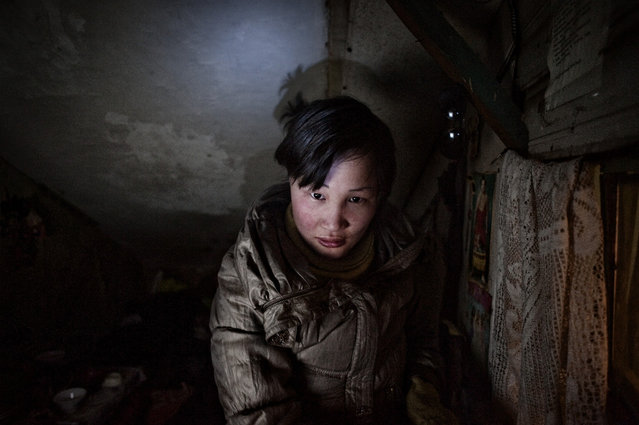
Asia, Mongolia, Ulaan Baator, March 22, 2011. Dyun Erdene, 26-year-old, former shepherd, in the tight space she shares with her family - her 55 years old father, a former shepherd, her mother, one sister and her 4-year-old nephew – in Ulaan Baator. She used to live with her family in Gobi-Ugtaal in the Dunggobi province, but during the Dzud they lost their 150 animals and, therefore, they decided to move to the city. She is pregnant but her boyfriend left her and now she is alone. Her mother is an apartment guard and they are living in an overcrowded room under the staircase in the same building where her mother works. They got this space thanks to her mother work (the only one who is working in the family). They should pay a small rent and they can just save some few money enough only for basic food. (Photo by Alessandro Grassani)
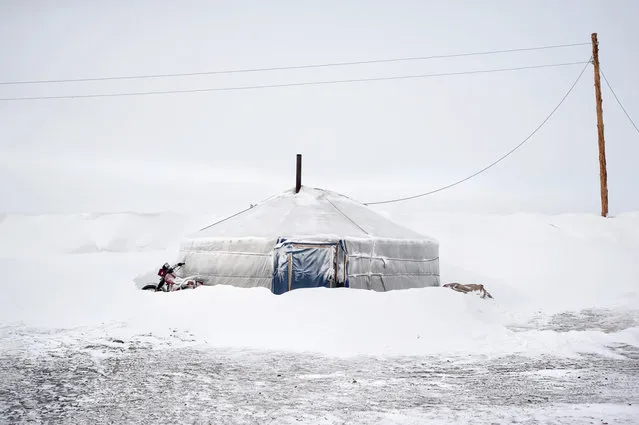
Asia, Mongolia, March 17, 2011. An abandoned gher submerged by snow. This gher rises close to the Tsamba family one and it has been left by a herding family after a snowstorm in the proximity of Ulziit village. (Photo by Alessandro Grassani)
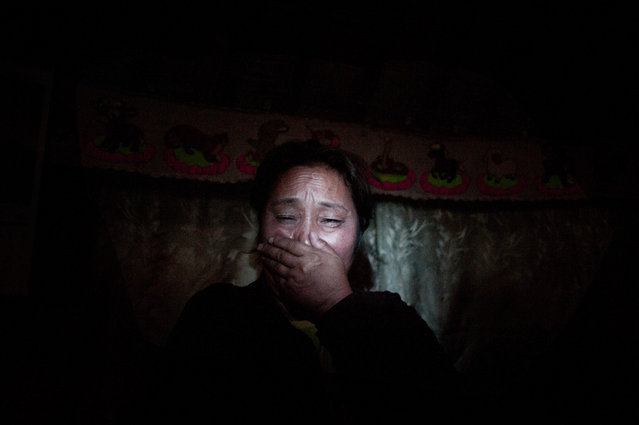
Asia, Mongolia, Ulaan Bator, March 24, 2011. Narantuya Enebish, 45 years old and ex sheperd crying just after she told me her story. This family lost all of their livestock (100 animals) that was their main source of income during the 2001 Dzud, and they moved from the Tuv province to Ulaan Baator in the Gher District. Her husband was working as taxy driver but after a car crash he is now paralyzed on the bed from 8 years, to sustain the family she started working by collecting cardboard at the Ulan Batar landfill but she got a lung cancer and now she can’t work every day in a so dirty and unhealthy place. They have 4 sons but only one is working as cleaning hospital but with any possibility in helping them. They get from the governrnent because of they sicknesses 140000 tugrik a month which are just enouth to buy the medicines they need (medium salary in Mongolia is around 300 dollars). (Photo by Alessandro Grassani)
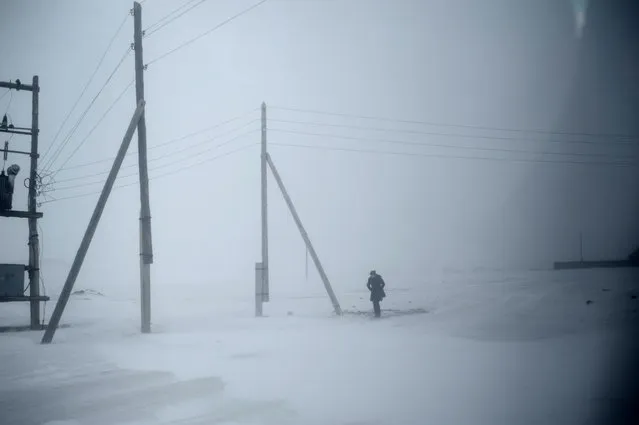
Asia, Mongolia, March 17, 2011. In the Arkhangai province, Just outside the Ulziit village. (Photo by Alessandro Grassani)
21 Jul 2015 10:10:00,
post received
0 comments
